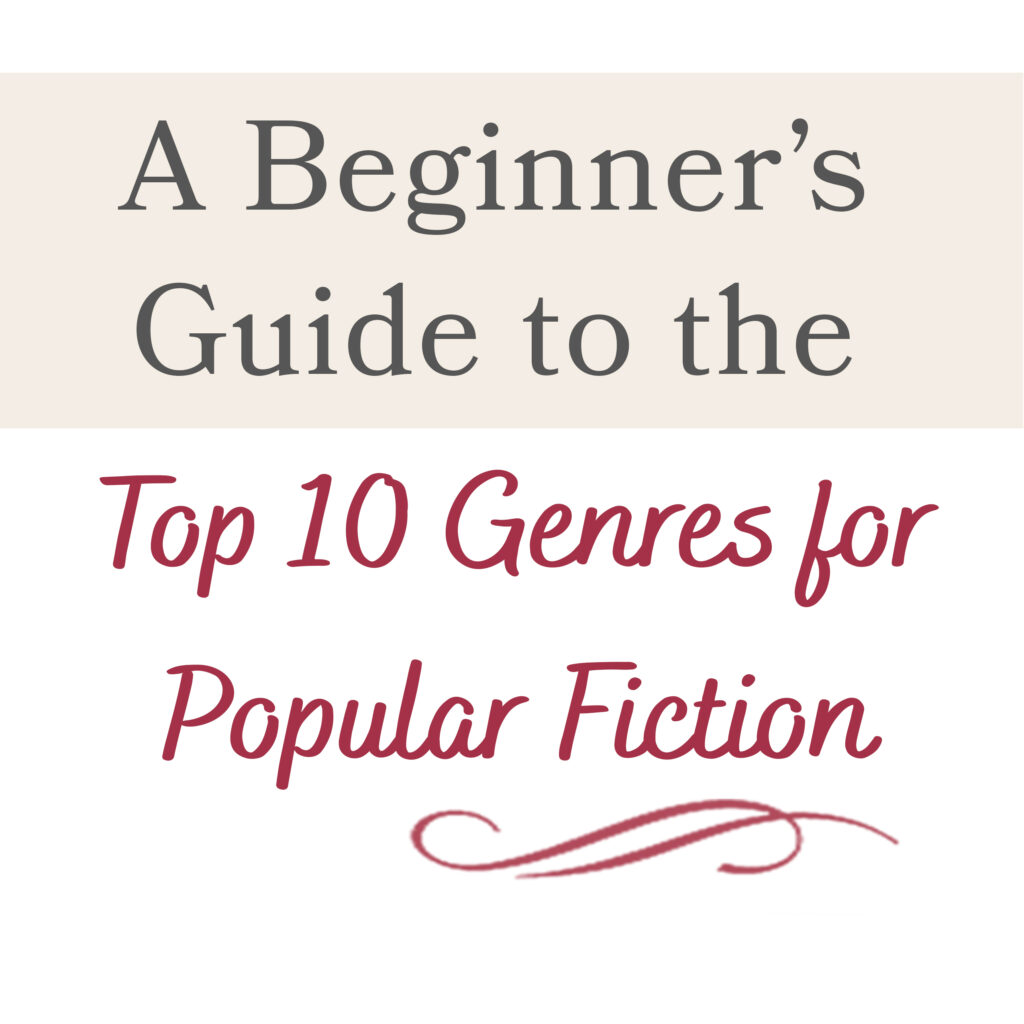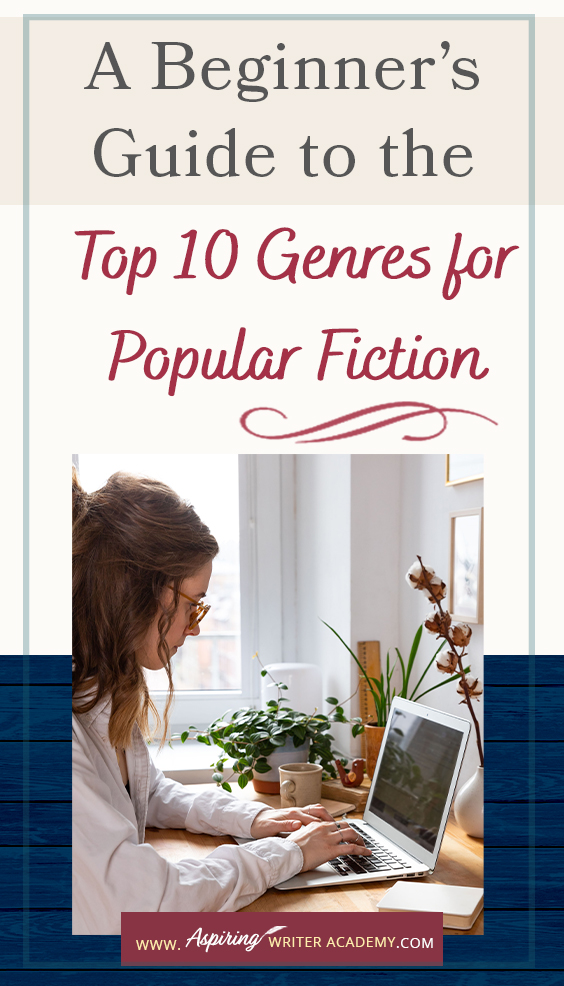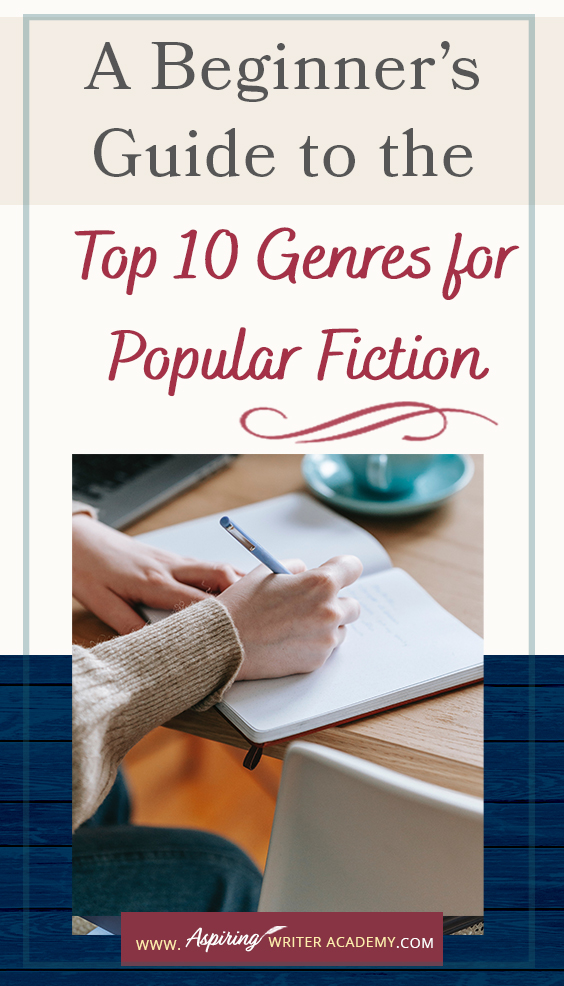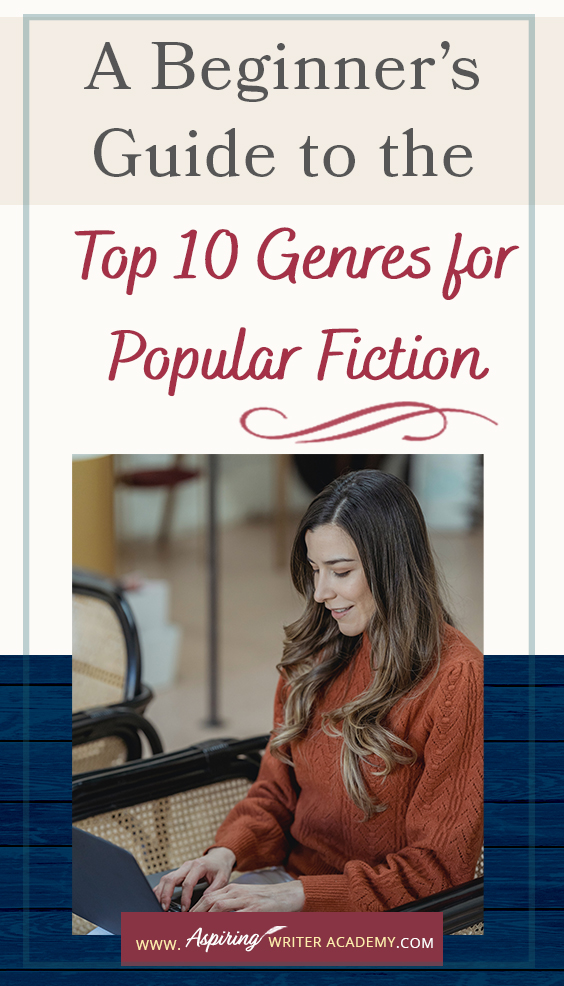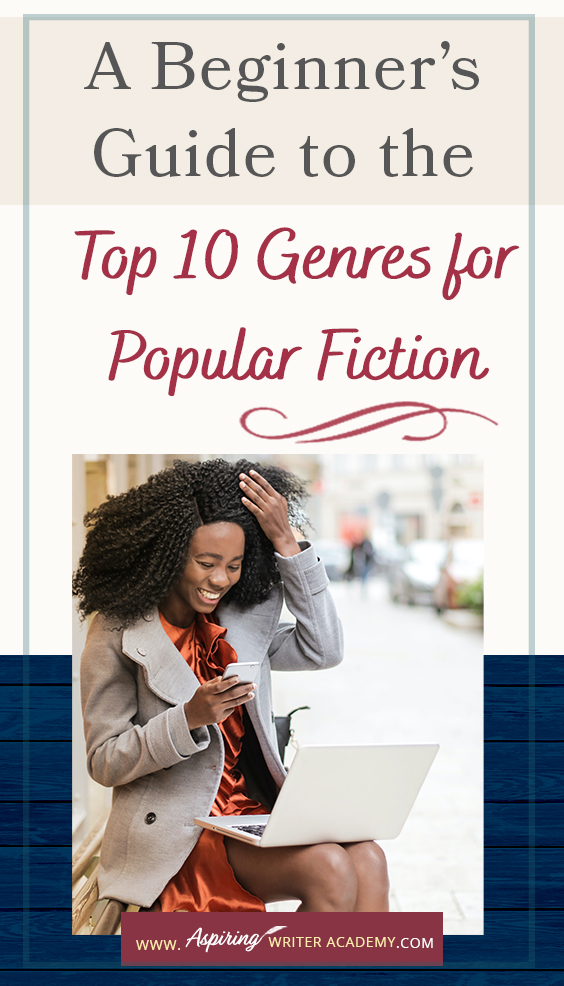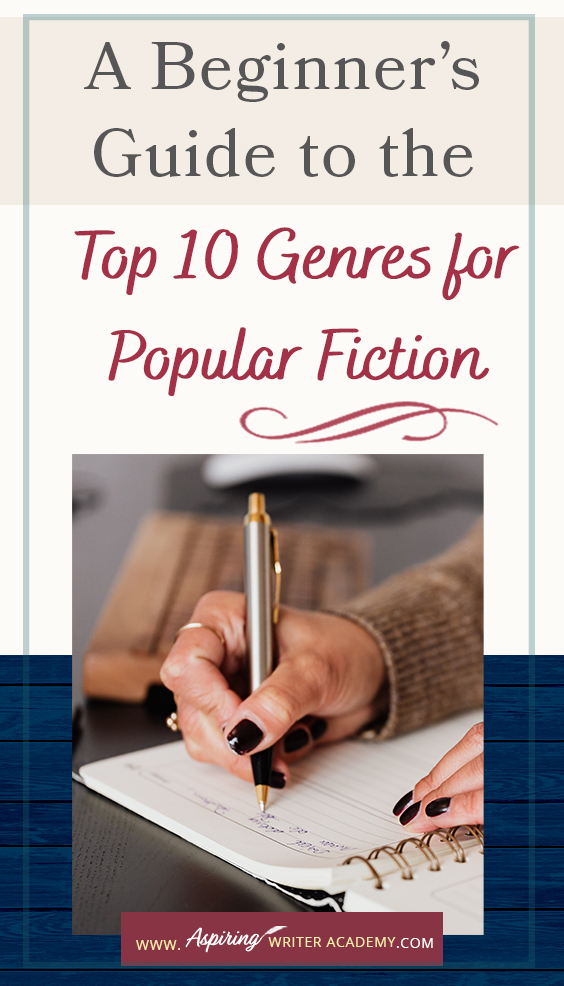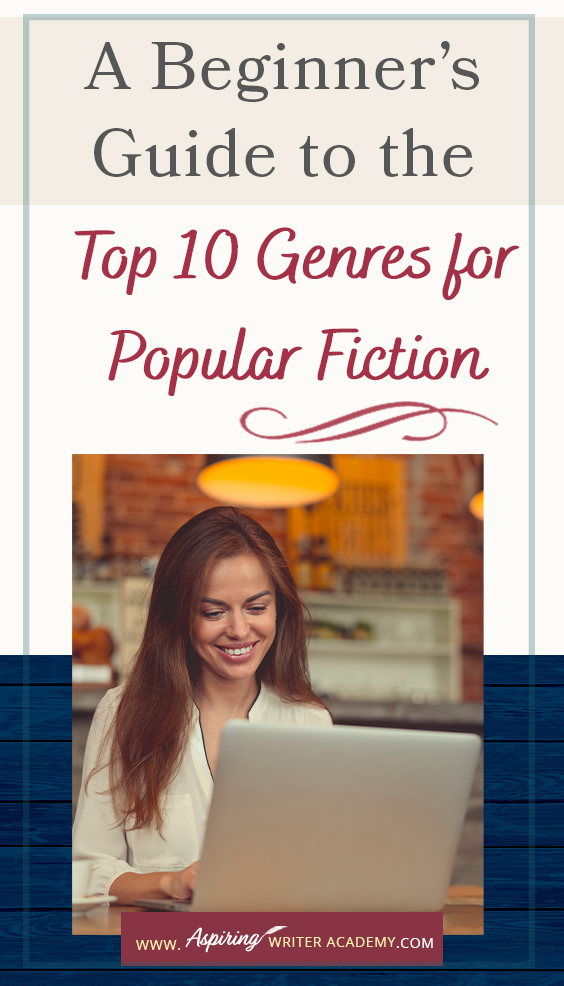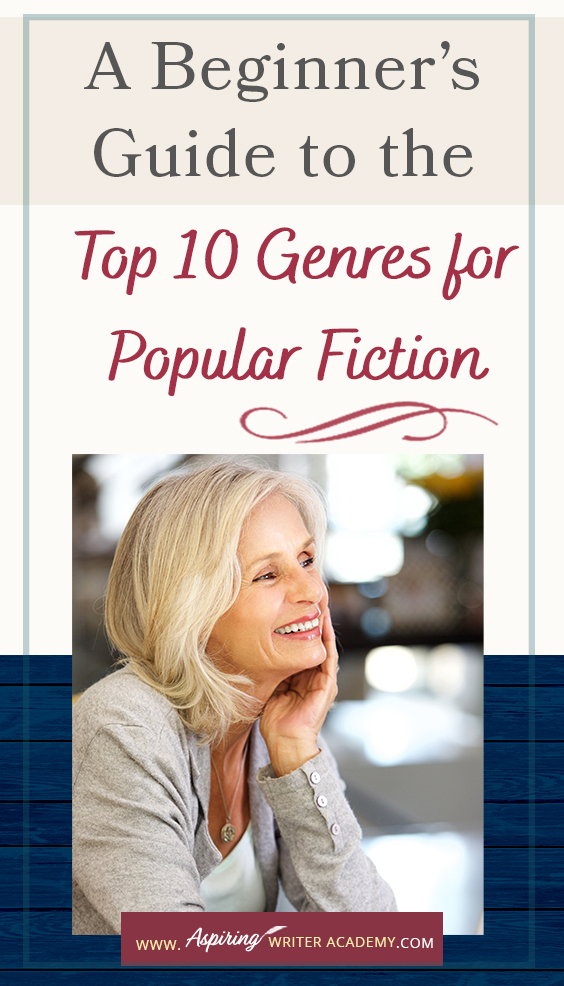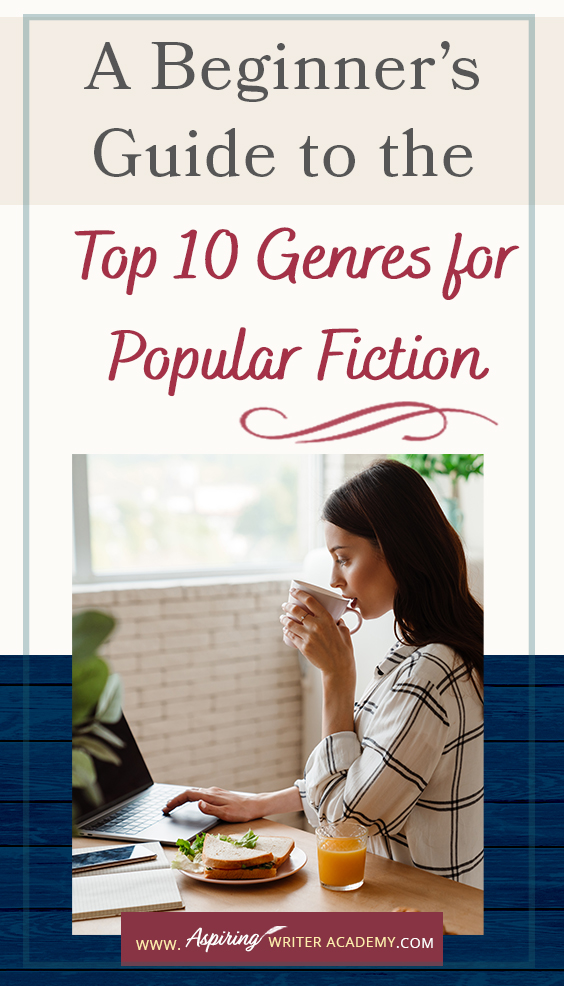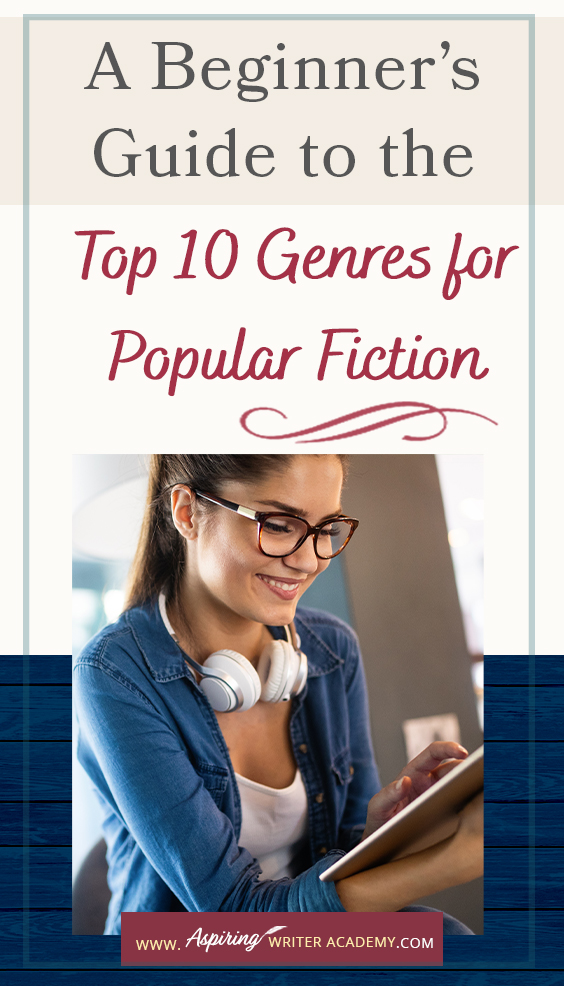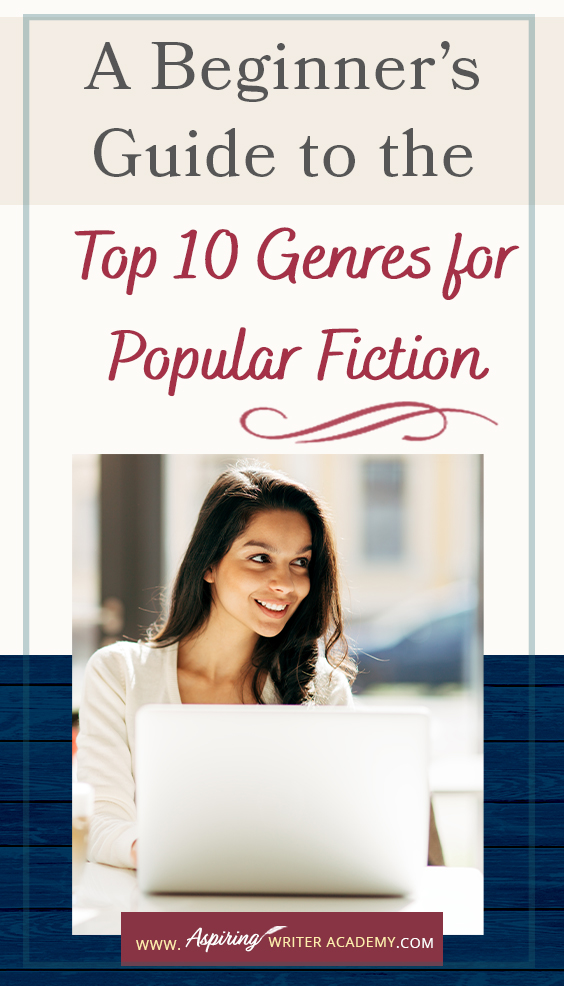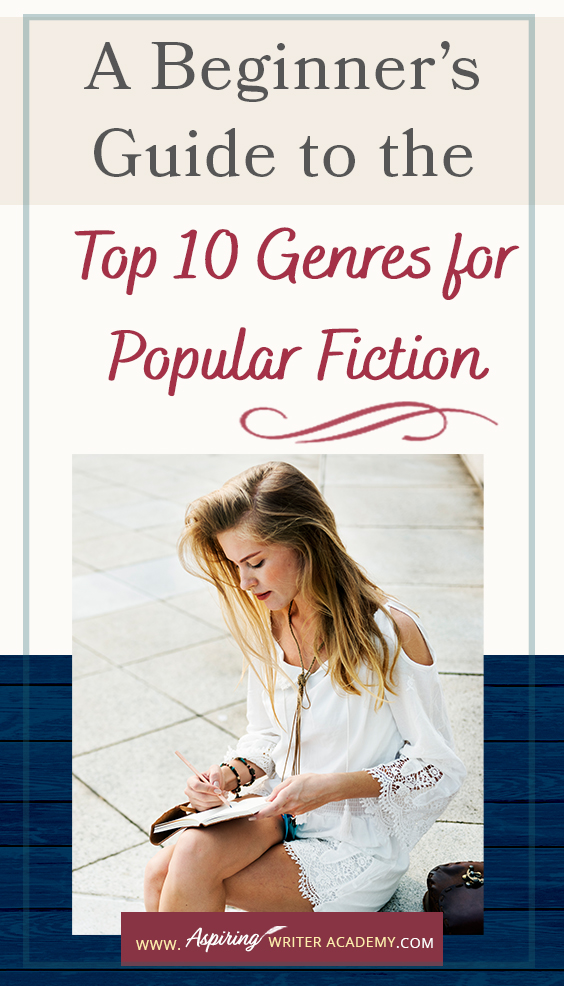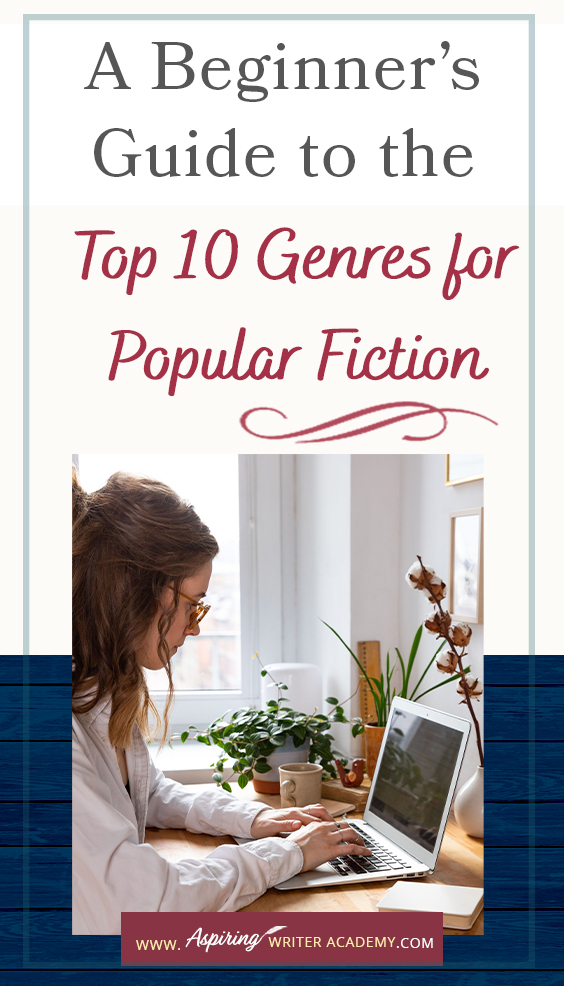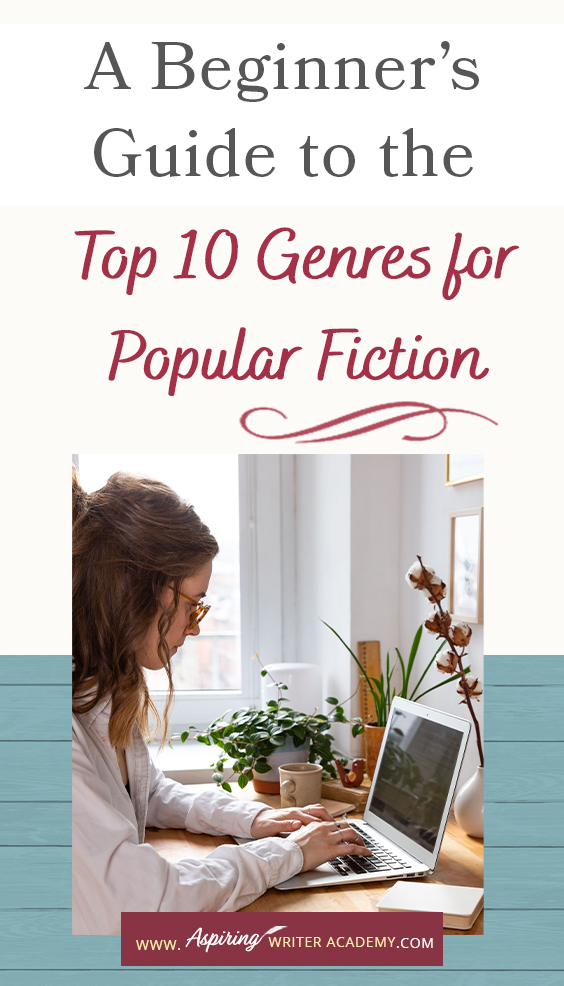A Beginner’s Guide to the Top 10 Genres for Popular Fiction
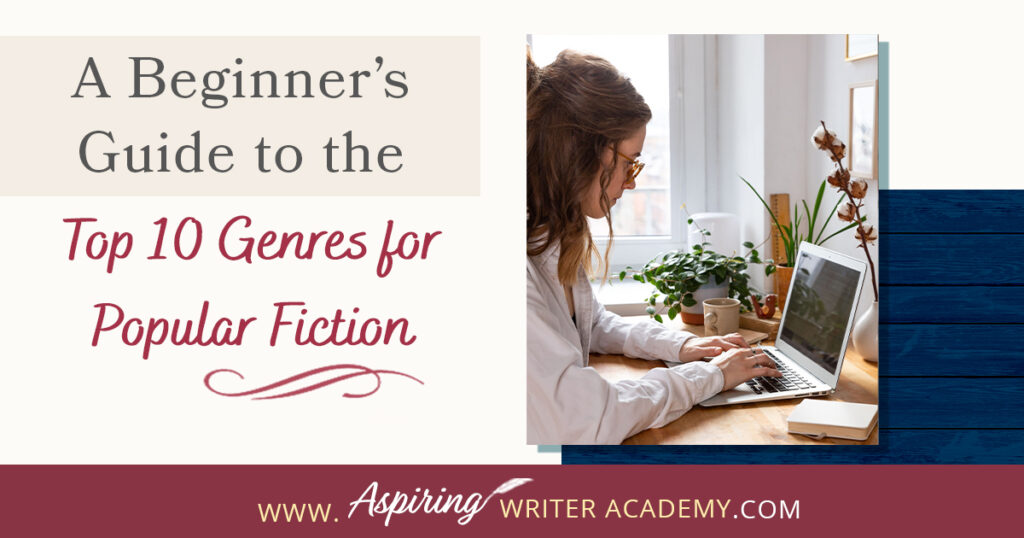
Would you like to write a book? Have you started writing but aren’t sure where your novel fits in the marketplace? If you are new to writing, you must first decide—What kind of story do you want to write? Thriller, fantasy, mystery, romance? Each genre (category) of fiction features different kinds of characters, setting, plot, and yes, even story resolutions.
In A Beginner’s Guide to the Top 10 Genres for Popular Fiction, we help you decide what kind of story is best for you.
If you are writing your first novel, and hope to get it published, it is best if you do not write a story using a genre hardly anyone has ever heard of. For your best chance of success, study the popular categories and once your writing career is established, then feel free to branch out and explore other genres you might be interested in.
What are the 10 most popular fiction genres?
The 10 most popular fiction genres are Romance, Fantasy, Science Fiction, Paranormal, Mystery, Horror, Thriller/Suspense, Action Adventure, Historical Fiction, and Contemporary Fiction.
While you might Google ‘genres’ and find lists for 35 or more different genres of fiction, many of those outside of the Top 10 we have listed are sub-genres. For example, Romantic Suspense is a combination of Romance and Suspense. Dystopian, is often dubbed a sub-genre of Science Fiction. Crime Fiction is usually a sub-genre of either Mystery or Thriller/Suspense.
The benefits of knowing what genre your story fits into are immense.
One of the first things an agent or editor will ask you is—what genre do you write? They need to know how to market your book and where to place it in the bookstore or online. Before you tell them anything about your plot, characters, or setting, an editor or agent will need to know the story genre. And it is best if you can provide that answer within a few short words.
It is also helpful for you, as the writer, to know the genre of your fictional story so that you can satisfy the expectations of the reader. With each genre comes certain expectations the reader looks for that type of story to fulfill. If labeled incorrectly, your reader may be sorely disappointed and never purchase another book from you again.
Example:
A Romance novel is not a true ‘Romance’ if the main romantic couple does not fall in love and commit to a fulfilling relationship at the end of the story. The reader expects a romance to have a happy ending, a potential for ‘happily-ever-after’ for the couple involved. If one of the main characters dies at the end of the story, it might be ‘Contemporary Fiction’ which supports such drama, but it wouldn’t be considered a ‘Romance.’ Many novels of bestselling author, Nicholas Sparks, are not true ‘romance’ precisely because of this requirement. Instead, his novels can be considered ‘Contemporary Fiction with Romantic Elements.’
To please your readers and work with professionals in the publishing industry, you need to know your story genre. And you need to study it. Read scores of books in your desired genre to familiarize yourself with the required elements and have your writing critiqued by an independent editor or writing mentor to make sure your story fulfills expectations.
Now, with that said, let’s take a look at the Top 10 Genres for Popular Fiction so you can discover which genre is best suited for the type of story you would like to write.
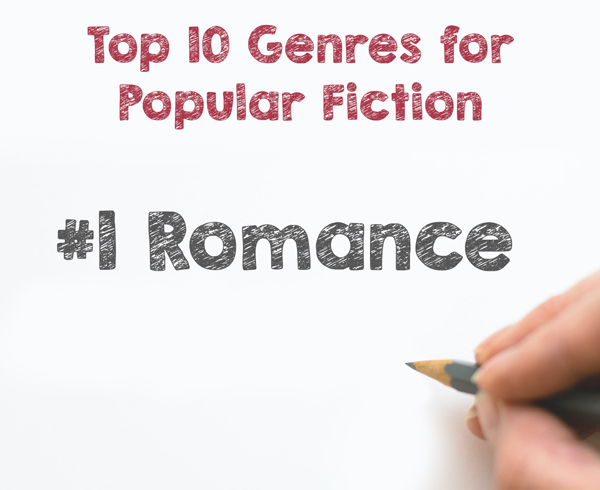
1) Romance
The plot (core storyline) must focus on the romantic relationship of the main couple. Two people are attracted to one another, fall in love, and need to overcome difficult challenges and seemingly unsurmountable obstacles before they are capable of fully committing to one another at the story’s end. They may have to resolve differences with an antagonist or villain who is trying to keep them apart. And/or the two lovers may need to heal from past wounds and learn to trust, forgive, or grow in character before they earn their chance for a happily-ever-after.
And yes, a true romance needs a happy ending. If not with a proposal or wedding, then at least a commitment to a relationship that may potentially last ‘forever.’ A true romance ends with hope for the future and touches the reader’s heart with warmth and elation over how everything worked out in the end for the romantic couple.
Romance is often combined with other genres such as Romantic Comedy, Romantic Suspense, Historical Romance, Paranormal Romance, but the core elements of the story still need to fulfill the Romance genre. The reader still wants to see the main couple get their happy ending. (Or else the story may be another core genre ‘with romantic elements.’)
Readers love swoon-worthy heroes, courageous heroines, witty banter, and the enticing heartfelt swirl of emotions as the romantic couple falls in love and develops a relationship. This is why the romance genre outsells every other genre in the publishing industry.
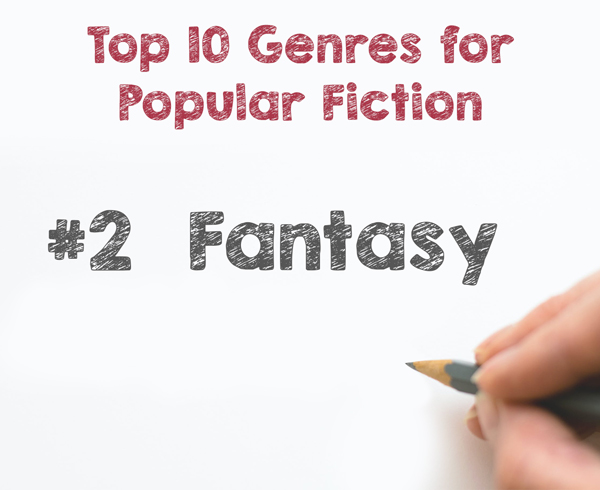
2) Fantasy
This book genre is known for fictional worlds that stretch the imagination, with stories full of supernatural or magical powers. The characters and plots are often inspired by mythology or folklore. In these stories you may meet elves, dwarves, giants, swordsmen with supernatural abilities, mythical monsters, dragons, wizards with magical powers, or other creatures and tribes you have never heard of. The supernatural, magical, or fantasy elements are key to the main storyline.
Examples are “The Lord of the Rings” and “The Chronicles of Narnia,” and “A Game of Thrones,” the first novel in A Song of Ice and Fire, a series of fantasy novels by American author George R. R. Martin, which was made into film.
A sub-genre of Fantasy is Magical Realism, where a special supernatural ability, or creature, or the use of magic is inserted into a real-world setting. Usually, the characters in these stories try to keep this fantasy element hidden from others. In the movie, “Teen Wolf,” a high school basketball player tries to keep the fact he frequently turns into a werewolf a secret from others, and when that doesn’t work out, he has to deal with the consequences.
Example: In the Disney movie, “Frozen,” the eldest sister, Elsa, could turn anything she touched into snow or ice. To hide this ability, and the fact she was different from everyone else and might even be considered dangerous, she wore gloves. This movie also featured trolls (who also tried to keep their existence secret) and a talking snowman created from Elsa’s ‘magic.’
In the 2000 film, “What Women Want,” the main character, played by Mel Gibson, could read women’s minds and hear everything they are thinking.
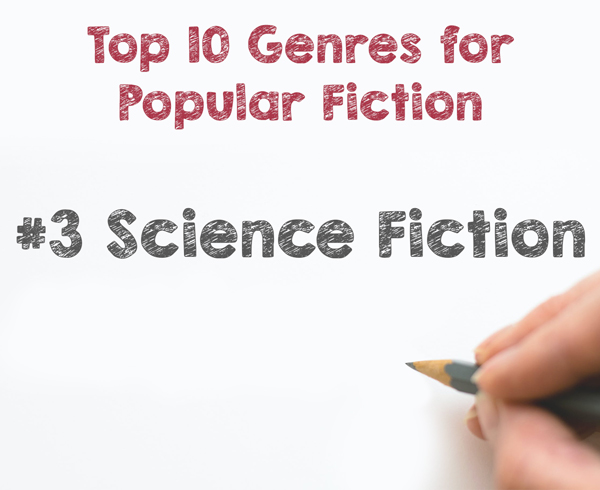
3) Science Fiction
The Science Fiction genre is characterized by scientific ideas or imaginary scientific breakthroughs, and may also include spaceship battles, exploration of other planets or solar systems, time travel, parallel universes, and extraterrestrial life. These stories are often set in the distant future so that the advanced technology and extraordinary ideas presented make the story world appear somewhat believable, perhaps even possible one day. Think of the movies “Star Trek” and “The Martian.”
Science Fiction can also focus on speculative ‘what if’ questions that deal with sociology and anthropology showing how our society may evolve in certain circumstances. Example: “The Planet of the Apes.”
Other examples of the Dystopian Fiction sub-genre, which shows a future society in decline after a disastrous event, are two book series made into film, “Divergent” by author, Veronica Roth, and “The Hunger Games” by Suzanne Collins.
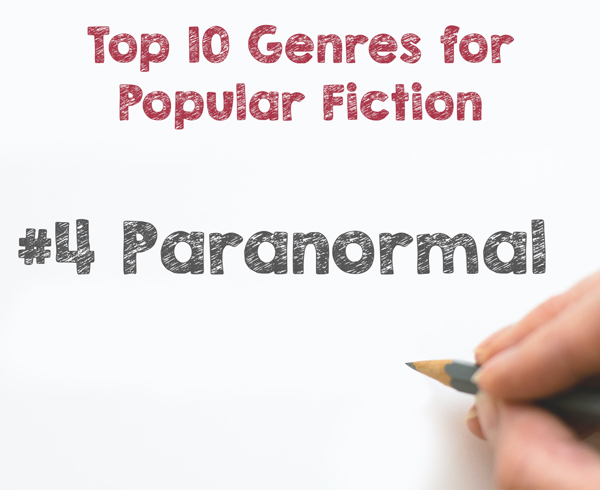
4) Paranormal
This genre focuses on supernatural abilities, experiences, creatures, or entities which cannot be explained in today’s world. These types of stories often feature ghosts, werewolves, vampires, witches, shape shifters, UFO’s, or other fictional species with special powers.
Characters in these stories may display the ability to turn invisible, or to read minds, or communicate via telepathy, teleport, see the future, levitate, fly, and change from one form to another. Perhaps your character may be able to speak to animals or shoot lightning bolts from the palms of his hands.
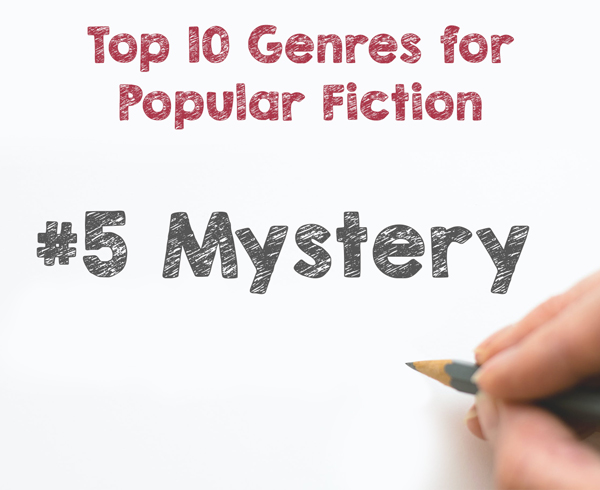
5) Mystery
These stories feature detectives, amateur sleuths, or inquisitive individuals who are called to solve a mystery. Questions such as who did it and why, as well as when, where, and how must be answered. The main character follows and investigates clues to unravel the truth, which often solves a crime.
The “Scooby-Doo” televised cartoon series is a good example of a mystery, as well as the “Sherlock Holmes” novels by Arthur Conan Doyle.
Stories in this genre also include courtroom dramas or legal thrillers, where evidence of a crime must be uncovered.
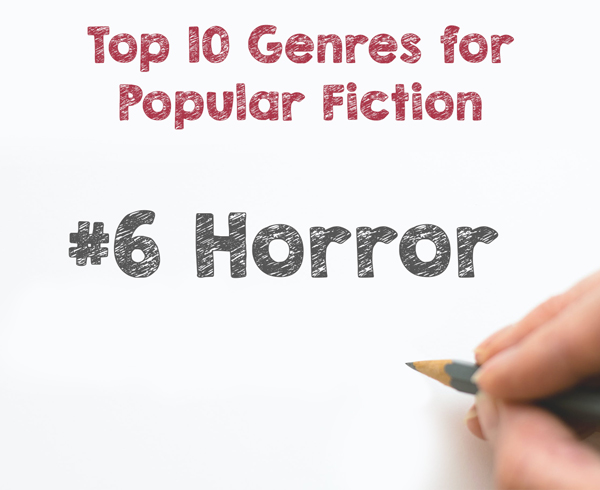
6) Horror
Horror novels are meant to scare you. These stories fill you with alarm and have you hiding under covers or peering into dark corners, dreading what you might find lurking in the shadows. Your heart races, your skin prickles, and your breath becomes shallow as you anxiously wait to see what happens next.
A horror novel may feature fearsome monsters, ghosts, demons, witches, haunted houses, vicious creatures, psychopathic individuals, zombies, cults, evil toys, or scary clowns, etc. The monster usually leaves behind a trail of death, leaving the reader to wonder who its next victim might be. A horror novel may also feature natural disasters, and apocalyptic end of the world scenarios.
Unlike the Romance Genre, the main characters may not be assured of a happy ending. In fact, many of them might not live. Many times, the characters meet with an unfortunate end and the monster terrorizing the camp or the town lives on to reappear in the next film or novel.
Examples include books by Stephen King, and films such as:
- “Jaws”
- “Friday the 13th”
- “Halloween”
- “Amityville Horror”
- “The Omen”
- “Frankenstein”
- “Wednesday” (on Netflix, featuring Wednesday Addams of The Addams Family classic television series)
The settings in these stories can also be frightening, like an abandoned castle during a thunderstorm or a spooky, dilapidated house in the dark woods.
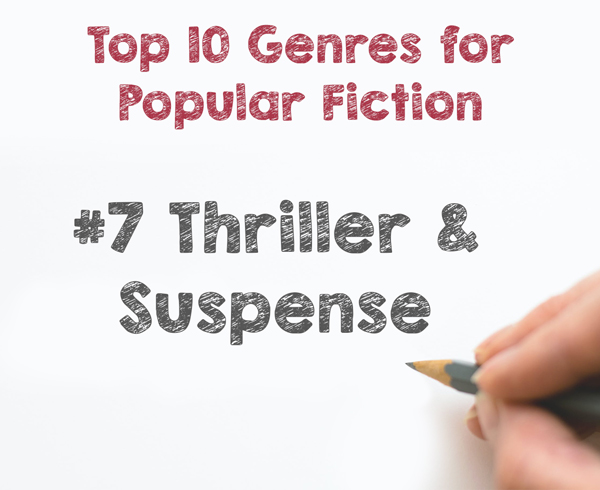
7) Thriller & Suspense
In a Thriller or Suspense novel, the main character is trying desperately to save his own life and possibly the lives of those he loves from a killer or group of individuals who are considered a dangerous threat.
Many times, there will be a dead body in the opening scenes of a Thriller or Suspense novel, but unlike a mystery, the focus is on survival, not the solving of the crime, although the criminal may be brought to justice at the story’s end…or not. A horror novel can also be considered a thriller, if it relies on psychological fear to build suspense.
A Thriller or Suspense novel focuses on danger, and is action packed, filled with high stakes, heightened emotion, cliffhangers, and deception.
A character may need the aid or protection of another character to help keep them alive as the villain closes in. A character pursued by a killer may try to start a new life in a new town or go into the witness protection program, only to be discovered and forced to go on the run once again. The main characters often carry guns or other weapons for defense against the killer chasing them.
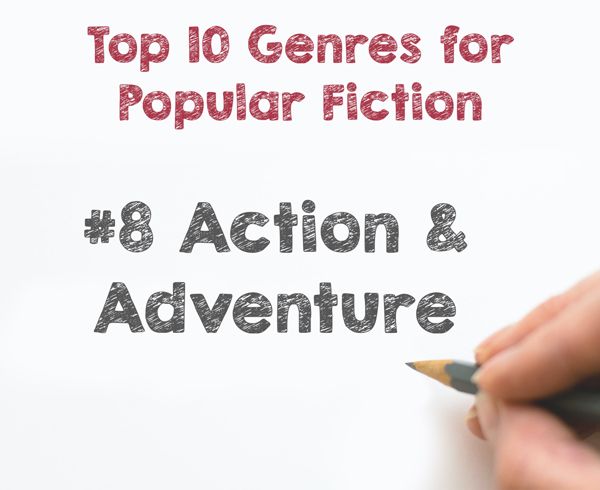
8) Action & Adventure
The Action & Adventure genre can be a fun swashbuckling adventure to find buried treasure or an arduous quest to summit a particular mountain peak before the rest of the competition who are all vying for a particular prize or title.
This genre is more fast paced than others and includes physical obstacles the main character must overcome in addition to any inner fears and challenges that may be holding him back.
The character encounters dangerous situations on his journey to achieve a particular goal. But usually, in an action-adventure story, he returns home triumphant, changed by his experience, with the prize or trophy in hand.
Example: The movie, “Romancing the Stone” or “Pirates of the Caribbean.”
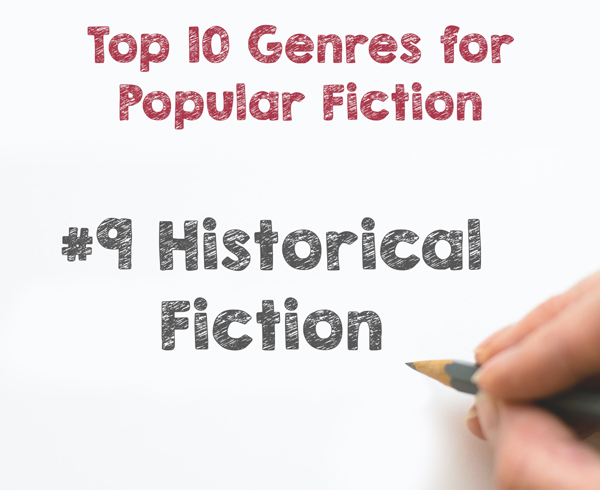
9) Historical Fiction
Fictional novels in this genre take place in the past, usually by at least fifty years. These novels pay great attention to detail, which requires the author to conduct a fair amount of research to write with the accuracy that readers of historical novels expect. You must research descriptions of clothes, customs, hairstyles, speech patterns, modes of transport, and whether a specific item was invented or in everyday use during the time period your novel takes place.
If your novel includes a real historical event or if your fictional characters meet real historical figures, this also takes research to write with authenticity.
Historical Romance is a popular sub-genre, featuring fictional characters who live in the past and fall in love. These stories also highlight the historical customs, dress, and challenges of a particular historical era, transporting the reader into the past and allowing them to experience what it might have been like to live back then.
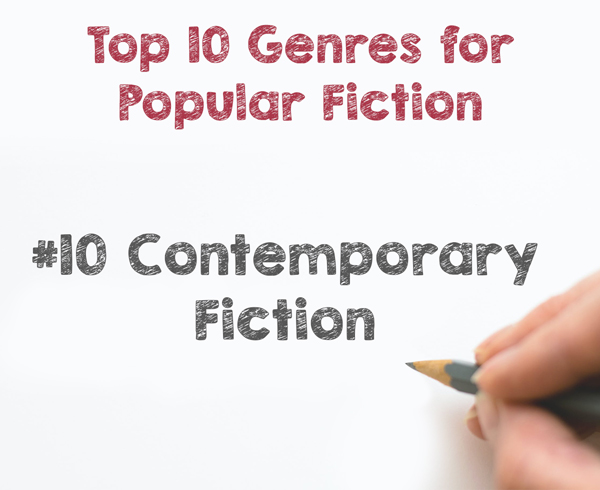
10) Contemporary Fiction
Novels in this genre take place in the present day and the conflicts and situations the fictional characters face spring up from everyday life such as dealing with problems at work, struggles with relationships, political differences, family drama, and other challenges of the modern world.
Women’s Fiction is a sub-genre featuring contemporary fiction geared toward a female audience. Topics may include issues with family, relationships, marriage, balancing work with responsibilities at home, health, friendship, and other experiences, thoughts, and emotions shared and understood by many women.
Young Adult (YA) is another sub-genre of contemporary fiction, geared toward readers aged 12-18 years, featuring fictional teenagers dealing with challenges faced by their age group. Often referred to as “coming-of-age” novels, the characters lose their childlike innocence as they struggle with adolescence, relationships, their identity, and the changes that come as they transition into adulthood.
New Adult is a fairly new genre that has been growing in popularity. These novels target readers slightly older than those of Young Adult and feature fictional college-age characters who are facing exams, or entering into new careers, and developing mature relationships or moving into more complicated life situations.
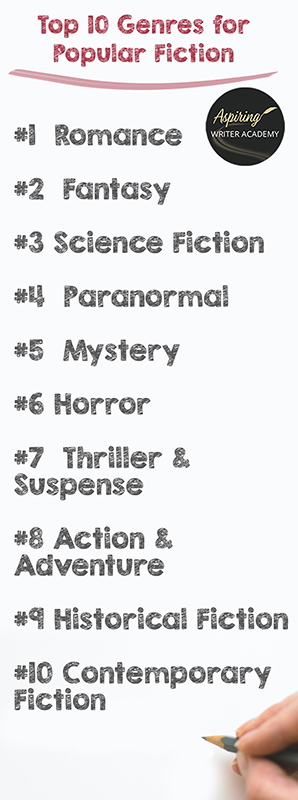
We hope you have found A Beginner’s Guide to the Top 10 Genres for Popular Fiction helpful, and you now have a better understanding of what kind of story you want to write.
If you have any questions or would like to leave a comment below, we would love to hear from you!
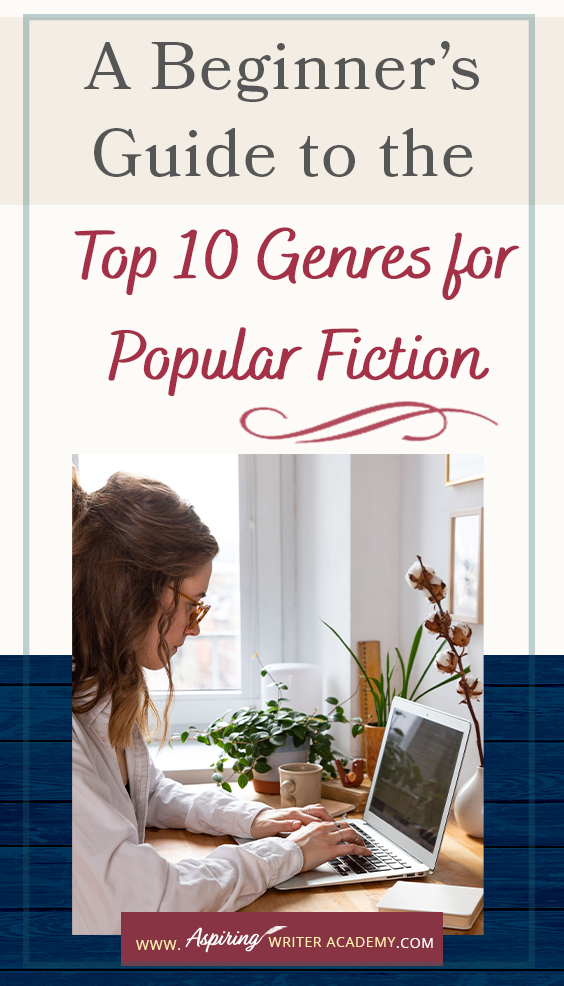
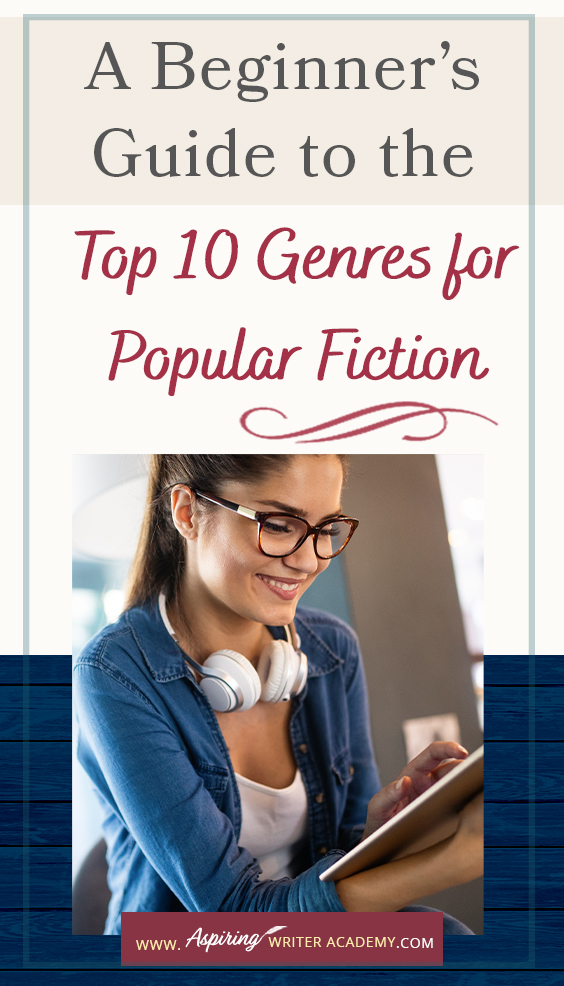
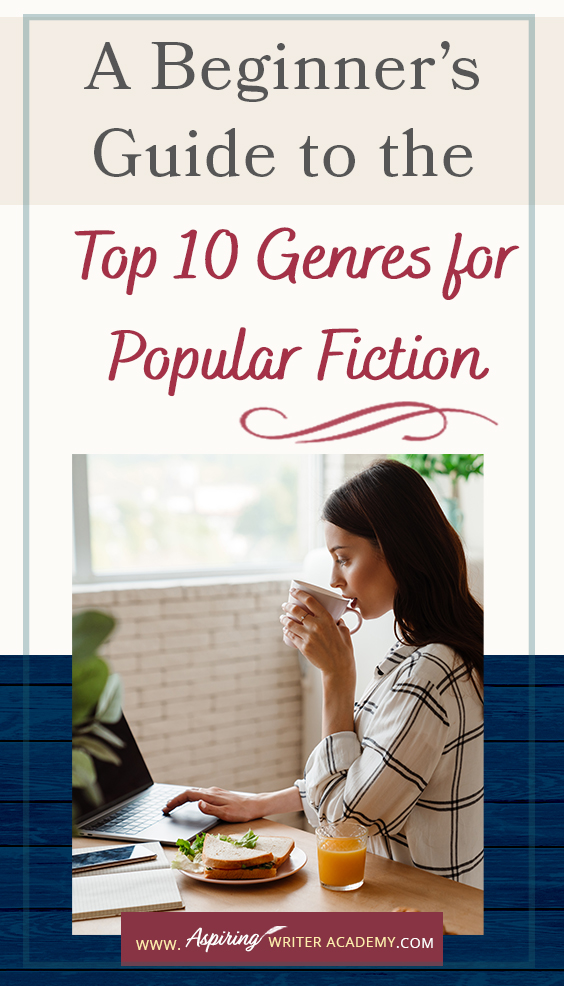
If you like more help developing your story, you may wish to download our Free Brainstorming Your Story Idea Worksheet
Do you find it difficult to create compelling antagonists and villains for your stories? Do your villains feel cartoonish and unbelievable? Do they lack motivation or a specific game plan? Discover the secrets to crafting villains that will stick with your readers long after they finish your story, with our How to Create Antagonists & Villains Workbook.
This 32-page instructional workbook is packed with valuable fill-in-the-blank templates and practical advice to help you create memorable and effective antagonists and villains. Whether you're a seasoned writer or just starting out, this workbook will take your writing to the next level.
We Believe All Authors Can Aspire to Take Their Writing to the Next Level!
Our Goal for Aspiring Writer Academy is to help people learn how to write quality fiction, teach them to publish and promote their work, and to give them the necessary tools to pursue a writing career.

ENTER YOUR EMAIL BELOW
TO GET YOUR FREE
"Brainstorming Your Story Idea Worksheet"
7 easy fill-in-the-blank pages,
+ 2 bonus pages filled with additional story examples.
A valuable tool to develop story plots again and again.
Other Blog Posts You May Like
How to Create a Deadline for Your Fictional Novel
Top 7 Books to Make You a Super-Productive Writer
How to Boost Your Productivity and Get Your Novel Written
How to Create S.M.A.R.T. Goals to Keep Your Writing on Track
How to Find a Writing Group: Tips for New Authors
Finding Your Genre: Tips for New Authors
The Power of Understanding Book Genres for New Authors
The Ultimate List of Book Genres: 95+ Popular Genres & Subgenres
Write Your First Novel: How Do You Start?
Do You Dream of Being a Published Author? (How Bad Do You Want It?)
Who is an ‘Aspiring Writer?’ 3 Tips to Escalate Your Career No Matter What Level You Are At
How to Write the Midpoint of Your Novel (and Avoid a ‘Saggy Middle’)
20 Items to Bring to Your First Writer’s Conference
How to Find a Great Story Idea in 4 Easy Steps
How to Write a Novel While Working Full Time
Slingshot Week: How to Set New Goals for Writing in 2023
The Pros and Cons of Writing Holiday Fiction (Collections & Anthologies)
Fiction Writing: How to Find a Critique Partner/Group
How to Research Information for a Historical Novel
7 Steps to Begin Writing a New Fictional Story
Fiction Writing: 5 Key Differences Between a Novel and a Novella
Fiction Writing: Office Supplies to Help You Prepare to Write Your Next Novel
3 Levels of Goal Setting for Fiction Writers
50 Top Resource Books for Fiction Writers
Why We Started Aspiring Writer Academy: Our Story

is a multi-published author, speaker, and writing coach. She writes sweet contemporary, inspirational, and historical romance and loves teaching aspiring writers how to write quality fiction. Read her inspiring story of how she published her first book and launched a successful writing career.

